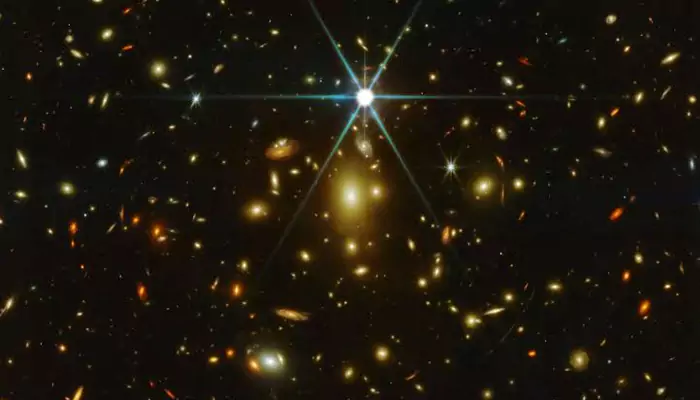
Here are today’s most important updates from the realm of Science and Space.
Nasa Alerts Over ISS Leak; Raises Concerns For Astronaut Safety, Station Integrity

The International Space Station (ISS) currently faces a critical challenge as a leak aboard the station, which was first detected in 2019, has now worsened. Due to that, there have been concerns about the safety of the crew and the station's overall stability. Both NASA and Russia's Roscosmos are working together to tackle the problem, but despite not being at odds, their differences in assessments have led to tension. For those caught unaware, the leak originates from a section of the ISS controlled by Russia. As of April 2024, the air is escaping at a rate of 1.7 kilograms per day, and overtime, it can put the crew’s safety at risk. NASA has raised alarms that if left unaddressed, the situation can lead to catastrophic failure.
Astronomers Say Egg-Shaped Galaxies May Be Aligned To Black Holes At Their Core

While black holes don’t have many identifying features, they do come in one colour (black) and one shape (spherical). Albeit, the main difference between the black holes remains the mass. The smaller ones can be found anywhere in a galaxy, but the supermassive black holes are usually found in the cores of galaxies. Nonetheless, the supermassive blackholes are still tiny in cosmic perspective. Interestingly, astronomers have now found out that there is a link between what goes on near the black hole and the shape of the entire galaxy. In fact, our Milky Way galaxy has one black hole at its centre (named Sagittarius A*), and just like us, other galaxies also seem to have a single supermassive black hole at their core.
ISRO Satellite To Be Launched By SpaceX's Falcon-9 Rocket Next Week

ISRO (Indian Space Research Organisation) is all set to collaborate with Elon Musk's SpaceX to launch its satellite into space. ISRO'S GSAT-N2 will take off into space with the help of SpaceX's Falcon-9 rocket, and the launch is set to take place next week from Cape Canaveral in the US. The collaboration is one such tie-up between ISRO and SpaceX. As for GSAT-N2, it has a lift-off mass of 4700 kg, and remains one of the biggest rockets ISRO currently has, with a lift-off capacity of around 4000 kg. Meanwhile, India has earlier joined hands with France's Arianespace and Russia for such launches.
NASA’s Hubble Shares Impact of Milky Way’s Gravitational Force on Large Magellanic Cloud

NASA's Hubble Space Telescope has now offered details of a close interaction between the Milky Way and the Large Magellanic Cloud (LMC), which is one of its nearest galactic neighbours. Led by Andrew Fox of the European Space Agency's Space Telescope Science Institute (STScI) in Baltimore, the analysis focuses on the effects of the near-collision with the Milky Way's massive halo. Measured for the first time, the extent of the LMC's halo is now estimated at 50,000 light-years across, which is much smaller than other galaxies of similar mass. Nonetheless, the LMC still contains sufficient gas to form new stars.












